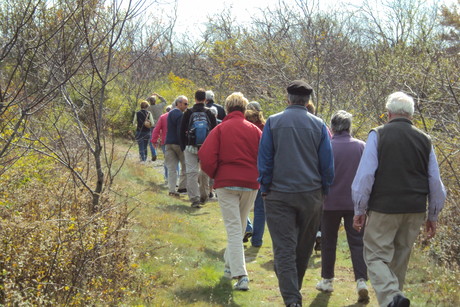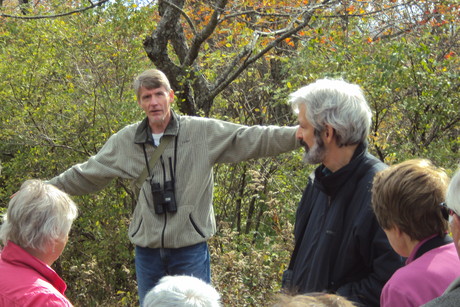The Wrack
The Wrack is the Wells Reserve blog, our collective logbook on the web.
The Wrack is the Wells Reserve blog, our collective logbook on the web.
Yesterday's Lunch 'n Learn in Mather Auditorium drew over 20 people who were interested in learning more about the birds of York County. Marie Jordan of York County Audubon Society shared her vast knowledge of birds, as well as an impressive slideshow of her bird photographs. Following are just a few of the snippets of information that I documented in my notes from the program:

After the indoor presentation, the group ventured outside on a bird walk with Scott Richardson. Soon after leaving the auditorium, a Sharp Shinned Hawk flew overhead and Scott explained the flight patterns and wing differences of the area's most common raptors.
Following is the list of birds either seen or heard along the walk: